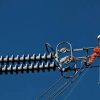Mobile
What Is T Mobile Edge?
T-Mobile EDGE is a technology that that make users able to connect with the intenet. It is ofter slower as compared to 3G but can be more reliable, making it a great option for those who need a reliable connection but don’t always need the fastest speeds. In this article, we will talk about what T-Mobile EDGE is, how to fix common problems with it, and tips for getting the most out of your connection. When using T-Mobile EDGE, users tend to experience slower speeds than they would with 3G, but it is also more reliable and dependable. It is often used in areas where 3G or 4G LTE reception is not available or is unreliable.
What Technology T-Mobile EDGE Is?
T-Mobile EDGE, also known as 2G, which stands for Enhanced Data Rates for GSM Evolution. This technology enables users to transfer data quicker on GSM networks. While it was once a revolutionary mobile data technology, it is now considered quite outdated compared to modern technologies such as 5G. 5G internet is exponentially faster than the older generations such as 3G and 4G. It is estimated that 5G can be up to 100 times faster than 4G, allowing for faster download speeds, enhanced streaming and overall improved mobile experiences. Along with the increased speed, 5G networks are also more reliable, meaning fewer dropped connections and faster loading times. With its superior speed, reliability and overall improved user experience.
EDGE Technology
However, when signal strength is not as strong as desired, mobile carriers often have to resort to older 2G technology. While these technologies are not as fast as the more modern options like 3G, 4G, and 5G, they are more reliable in terms of coverage and signal strength. In areas where 3G/4G/5G connection is not available, EDGE is the only option for reliable internet connection. This shows the importance of EDGE for customers who are in rural or remote areas and need reliable internet access. Additionally, EDGE technology is important for ensuring connection in locations where the signal strength may not be strong enough for newer, faster technologies.
Signal Strength
It is always best to have a strong signal on your phone, as this is necessary for a quality internet experience. Unfortunately, there are times when your phone can switch on EDGE even when you have a full signal. This can be incredibly frustrating and can significantly slow down the internet experience. Luckily, there are some steps you can take to resolve this issue. First and foremost, turn your phone off and then back on again. This can often help to reset the connection and restore your expected signal strength. If this does not work, then you can try toggling the airplane mode on and off again. This will also reset the connection and can potentially resolve the problem.
Why Does Your 4G LTE Subscription Show EDGE?
The ‘E’ symbol in a 4G LTE subscription may be indicative of several issues. Firstly, if there is insufficient cell tower coverage in your area, the signal strength may be too weak to connect to 4G or 5G networks. This will result in a default connection to EDGE, which is the slowest form of data transmission available. Secondly, if you are in a remote area where 4G or 5G coverage has not yet been established, your device will automatically switch to EDGE. Additionally, it is possible that your device may be incompatible with 4G or 5G networks, forcing it to connect via EDGE instead. If you are unsure of the cause of your connection issues, it is advisable to contact your cellular

How Do You Fix an EDGE-Stuck Mobile Phone?
T-Mobile EDGE can sometimes suffer from slow speeds, dropped connections. Even complete outages, which can be a source of frustration for users. Fortunately, there are a few possible solutions you can try to get your connection running smoothly again. Here are just a few recommendations:
Restart Your Mobile Device.
The first step to resolving any connection issues is to restart your phone. Restarting your device will clear any temporary connection errors and allow you to properly reconnect. If restarting your phone does not resolve your issue. Please make sure you are in an area with an adequate signal. Your device is connected to the correct network. If you are still having trouble reconnecting, please contact your service provider for further assistance.
Disconnect From The Mobile Network And Re-Connect:
If you are having issues connecting to a wireless network, restarting your phone is often the first step to resolving the issue. Restarting your device will reset any connection issues and allow you to reconnect properly. To restart your phone, hold down the power button for several seconds. Select the option to restart the phone. Once the restart process is complete, try connecting to the wireless network again. If the issue persists, you may need to further troubleshoot the connection issue or contact your service provider for additional assistance.
Activate Airplane Mode, Then Deactivate It
Airplane mode is very useful to cope with the situation. This will usually resolve the issue, and your phone will automatically reconnect to the internet at a better speed. To enable Airplane Mode, go to your phone’s Settings, then Network & Internet. Once you find the Airplane Mode option, select it, and your phone will turn off all wireless signals. Wait a few moments and then disable Airplane Mode. Your device should reconnect to the internet at a faster speed. If the issue persists, you may need to reset your network settings or contact your carrier for assistance.
Update The Software On Your Phone.
Your internet connection may be having problems if your phone is utilising an old version of the software. Make sure your phone is on the most recent operating system update to correct this. Setup > System > Update Center is where you can check for updates.
Boost The Signal Strength:
If you are experiencing a weak signal, there are a few steps you can take to improve the signal strength. Firstly, try to move yourself and your device closer to the nearest cell tower. This can be especially effective in urban areas where cell towers are more concentrated. Secondly, if you are unable to move closer to a cell tower, you may want to consider purchasing an external antenna. An external antenna can help boost signal strength, giving you a stronger and more reliable connection. Finally, you may want to check that your device is using the latest version of your operating system. Updates can sometimes improve the signal strength. If you have taken these steps and still find your signal to be weak, contact your service provider for further assistance.
Select The Proper Network Mode
Utilizing your phone’s 5G capabilities can provide you with faster speeds and increased reliability in your mobile connections. To take advantage of these advantages, you can change the network mode setting on your phone. You can switch between different networks available at you location like 2G, 3G/4G/5G, depending on your needs. To do this, you can simply go to your phone’s Settings > Network & Internet > Mobile networks and select the desired network mode. Selecting 5G will provide you with the highest bandwidth possible and the best connection speeds. Keep in mind that, depending on the region you are in, your phone may not be able to connect to 5G networks, so it is best to check.
Change The Battery-Saving Settings
Today’s smartphones feature a variety of different battery management options, with some of them being particularly aggressive in their power-saving capabilities. In particular, some phones are programmed to automatically switch to a slower network in order to conserve battery power. This feature may be beneficial for users who are looking to maximize their battery life, as it can help ensure their smartphone remains operational for longer. However, it can also be problematic for those who require faster data speeds or who experience frequent network outages. Therefore, it is important for users to understand their phone’s battery management settings and determine whether or not it is the right choice for their needs.
Reset Your Network Configuration:
If you are still having trouble in the networks you can rest the network setting. These settings are available in every phone. You can do this, by going to Settings > Reset > Backup& Reset. Then tap Network > Reset Settings. Please keep in mind that this action will erase all of your previously stored Wi-Fi networks and Bluetooth connections, as well as any changes you have made to your internet settings. It is important to remember to write down any passwords or username information that you may need to re-enter after the reset is complete. Additionally, you may need to re-pair any Bluetooth devices you were connected to prior to resetting your network settings.
Limit The Number Of Apps You Use.
Using applications can quickly consume a large amount of data, so it is important to only use apps that are essential. If you are currently experiencing a T-Mobile EDGE connection issue, there are a few common solutions to attempt. A simple restart of the device can often resolve technical issues, so it is worth trying this. Additionally, checking the Network settings and ensuring that the device is set to the correct network can sometimes resolve these issues. If the issue persists, it could be worthwhile to try and connect to the EDGE network in a different area. Another potential solution is to clear the application cache, which can help to free up some space and potentially improve the connection.

Conclusion:
T-Mobile EDGE, that are known as 2G, are cellular network which offer slower data speeds as compared to the company’s 4G LTE service. In case of any issue restarting your phone, disconnecting and reconnecting to a Wi-Fi network, or updating your phone’s software or operating system can all help to improve your connection and data speeds. Additionally, you should try moving to an area with better cellular coverage and make sure that your phone’s antennas are unobstructed. If these solutions don’t work, you may need to contact T-Mobile’s customer service team to diagnose.
After enabling and disabling Airplane mode on your iPhone, make sure you can use the mobile hotspot. If you are not able to connect to the mobile hotspot, ensure that you have a valid data plan active on your account. Then, restart your phone and try again. If you are still having issues, try turning off your Wi-Fi, restarting your phone and enabling the hotspot again. Additionally, you can try changing the name and password of the hotspot and then attempt to connect again. If your T-Mobile connection is still having issues even after trying all these troubleshooting steps, try resetting your network settings or contact your mobile service provider for further assistance.
Happy Clients:
T-Mobile EDGE issues can be frustrating and inconvenient. Have you ever encountered an issue while using T-Mobile EDGE? If you have, what steps did you take to try and resolve the issue? We would love to hear your stories! Please leave a comment below with your experience and what you did to resolve the problem. Your stories could be helpful for others who are also having similar difficulties. Thank you for taking the time to share your stories!
Frequently Asked Questions
Why Do You See EDGE on a 4G LTE Subscription?
If you have weak signal quality or in the basement the signals can be dropped. The 4G enabled smart phone may shift to 2G which is slower than 4G. Sometime the signal towers are far from your location or having bands that are not supported by the cell phone can be the reason of EDGE network.
What happened when you Reset Your Network Settings?
Resting the network will remove the following things on the phone:
Wi-Fi network passwords
Paired devices
Bluetooth devices
2. Disconnecting and Reconnecting to Mobile Network
3. Turning Airplane Mode On and Then Turn It Off
4. Updating Your Phone’s Software
5. Increasing Your Signal Strength
6. Choosing the Right Network Mode
7. Modifing Battery Saver Settings
8. Removing Your Sim Card and Install It Again
9. Reseting Your Network Settings



















